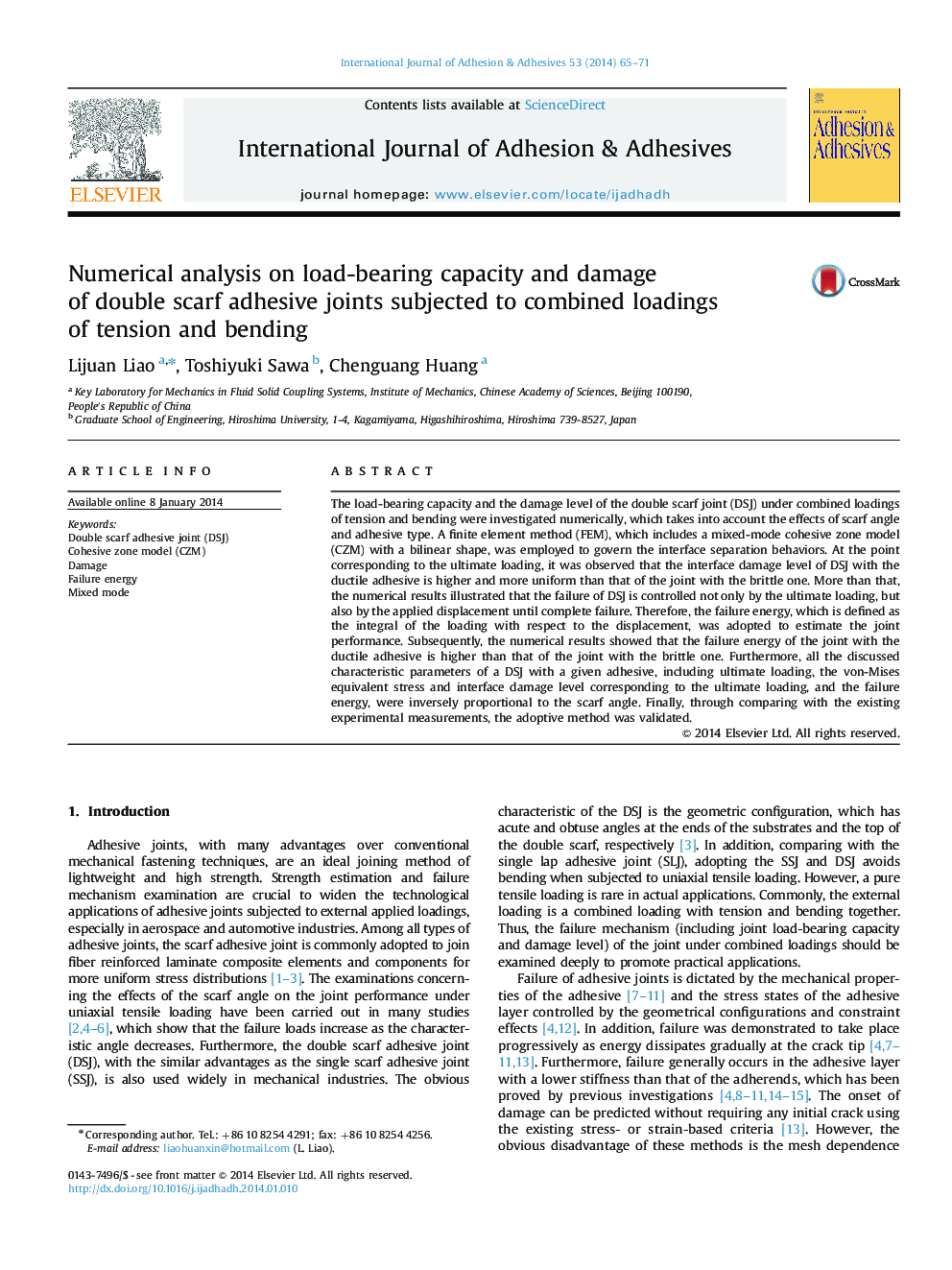| Article ID | Journal | Published Year | Pages | File Type |
|---|---|---|---|---|
| 779911 | International Journal of Adhesion and Adhesives | 2014 | 7 Pages |
The load-bearing capacity and the damage level of the double scarf joint (DSJ) under combined loadings of tension and bending were investigated numerically, which takes into account the effects of scarf angle and adhesive type. A finite element method (FEM), which includes a mixed-mode cohesive zone model (CZM) with a bilinear shape, was employed to govern the interface separation behaviors. At the point corresponding to the ultimate loading, it was observed that the interface damage level of DSJ with the ductile adhesive is higher and more uniform than that of the joint with the brittle one. More than that, the numerical results illustrated that the failure of DSJ is controlled not only by the ultimate loading, but also by the applied displacement until complete failure. Therefore, the failure energy, which is defined as the integral of the loading with respect to the displacement, was adopted to estimate the joint performance. Subsequently, the numerical results showed that the failure energy of the joint with the ductile adhesive is higher than that of the joint with the brittle one. Furthermore, all the discussed characteristic parameters of a DSJ with a given adhesive, including ultimate loading, the von-Mises equivalent stress and interface damage level corresponding to the ultimate loading, and the failure energy, were inversely proportional to the scarf angle. Finally, through comparing with the existing experimental measurements, the adoptive method was validated.
